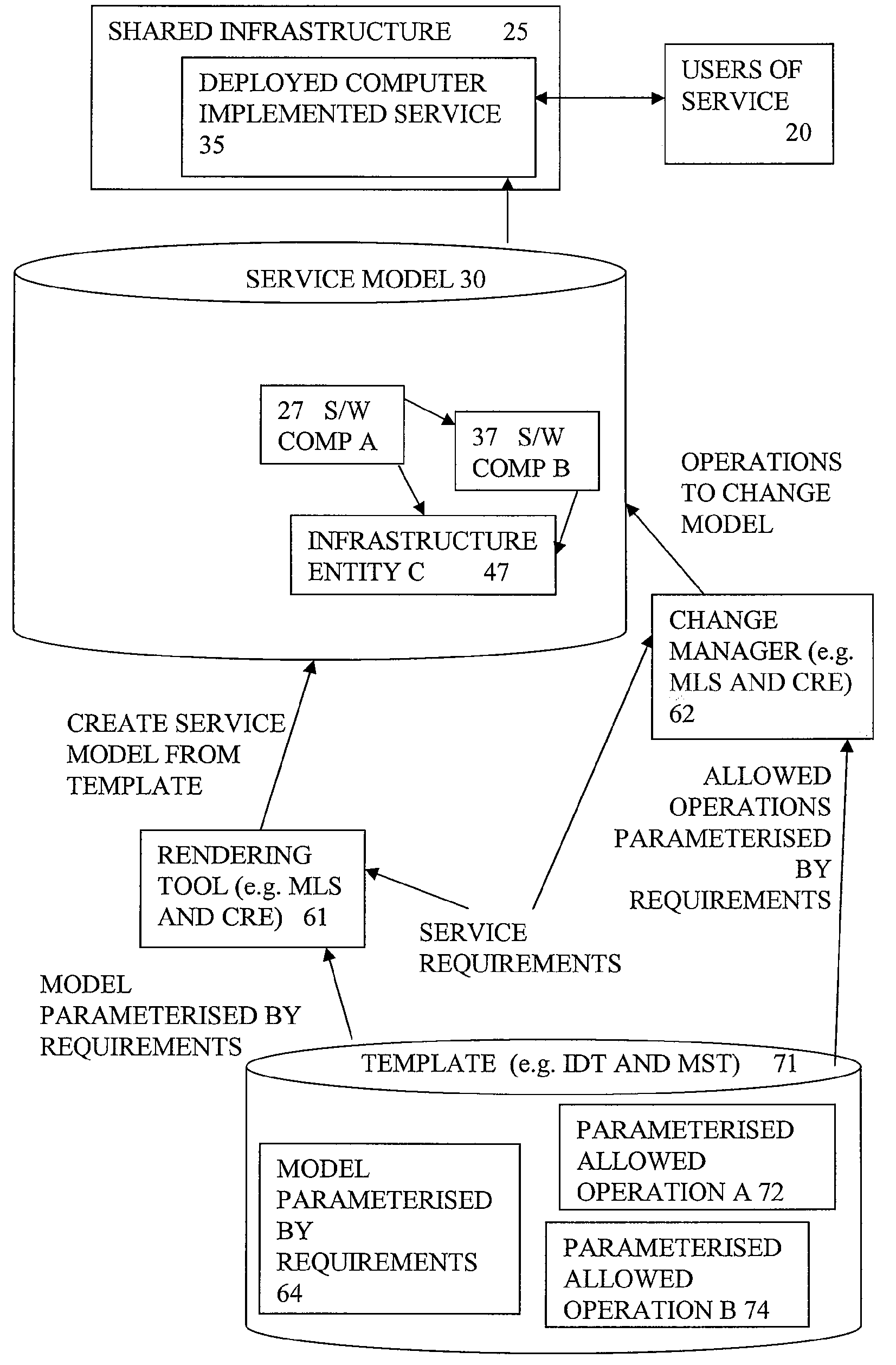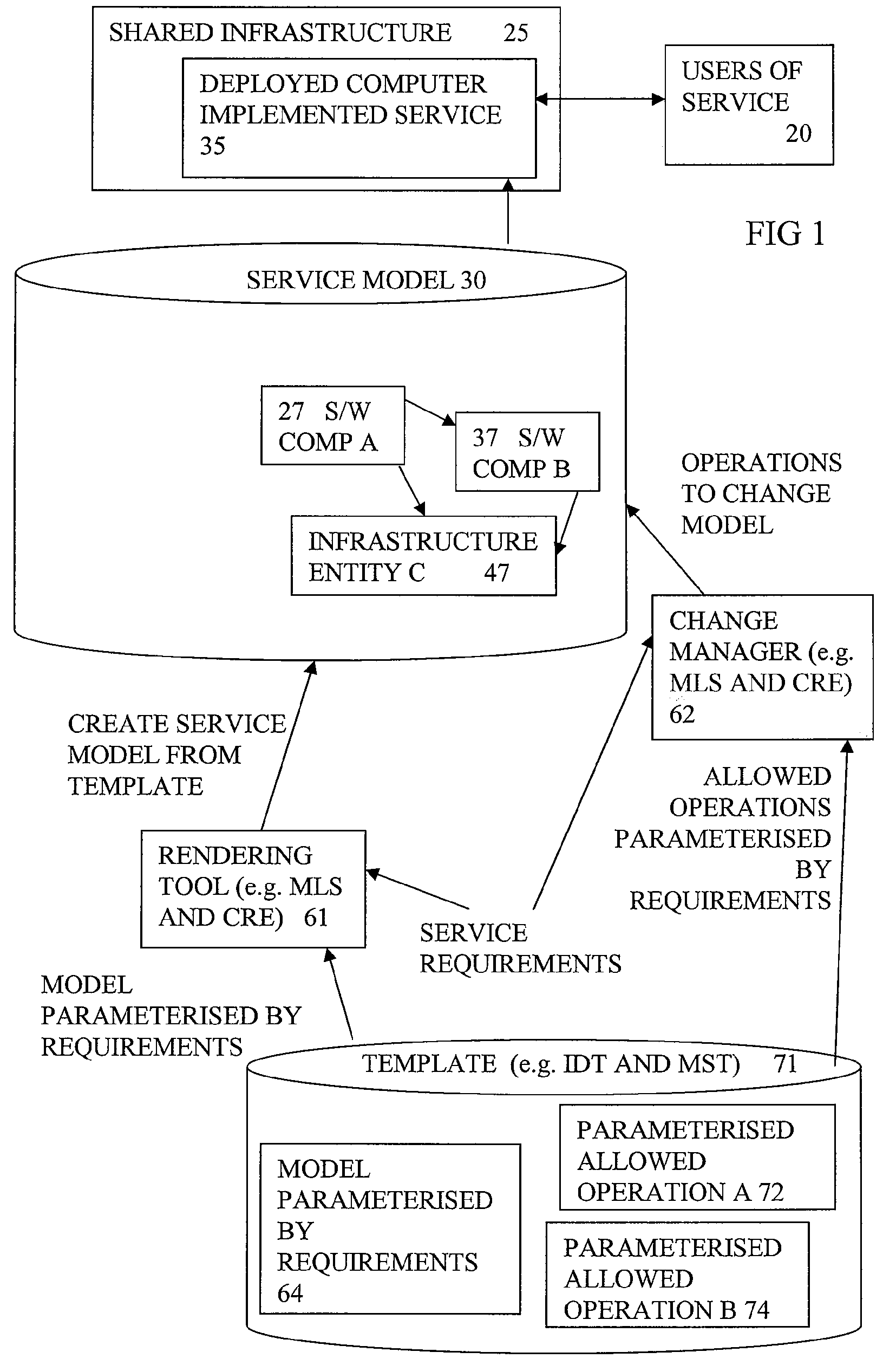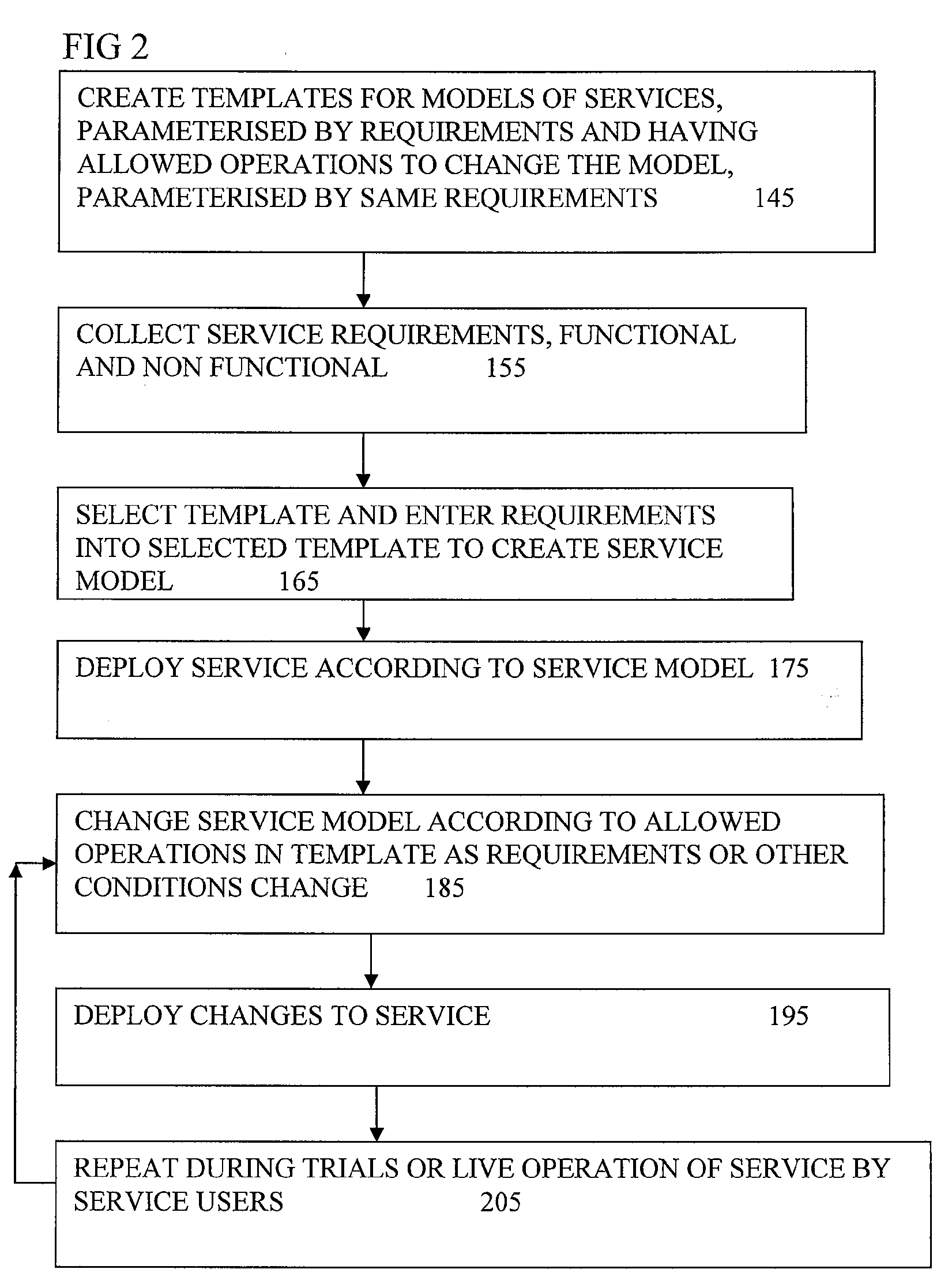Change Management of Model of Service
a service model and service management technology, applied in the field of system management of computer implemented services, can solve the problems of difficult management of physical it (information technology) infrastructure, high cost of changes, and high cost of changes
- Summary
- Abstract
- Description
- Claims
- Application Information
AI Technical Summary
Benefits of technology
Problems solved by technology
Method used
Image
Examples
example adaptation
[0334 Policy Specification Referenced by the IDTM.
[0335]Adaptation Policy Specification 1 shown below is an example of a policy suitable for use with the IDTM fragment 1 described above. The policy that might be contained in the file referenced in line 84 by the IDTM fragment 1. Policies are loaded by an Adaptation Policy Engine. The Adaptation Policy Engine interprets the specification, sets up the required condition triggers, and performs the corresponding adaptation actions if a trigger is satisfied.
[0336]Adaptation Policy Specification 1:
1 policy (2 name: “memoryPolicy”,3 condition: {4 vm(“aCompSystem”).memory.event ||5 vm(“aCompSystem”).memory.avg(2).gt(0.7) },6 action: {7 vm(“aCompSystem”).updateMemory( )8 vm(“aCompSystem”).updateCPU(10)9 }10 )
[0337]A policy specification file may contain many such policy specifications, but this example shows just one (line 1). Each adaptation policy has a name, here “memoryPolicy”. condition is a specification of the logical co...
PUM
 Login to View More
Login to View More Abstract
Description
Claims
Application Information
 Login to View More
Login to View More - R&D
- Intellectual Property
- Life Sciences
- Materials
- Tech Scout
- Unparalleled Data Quality
- Higher Quality Content
- 60% Fewer Hallucinations
Browse by: Latest US Patents, China's latest patents, Technical Efficacy Thesaurus, Application Domain, Technology Topic, Popular Technical Reports.
© 2025 PatSnap. All rights reserved.Legal|Privacy policy|Modern Slavery Act Transparency Statement|Sitemap|About US| Contact US: help@patsnap.com



